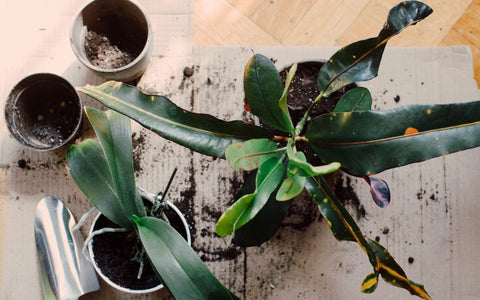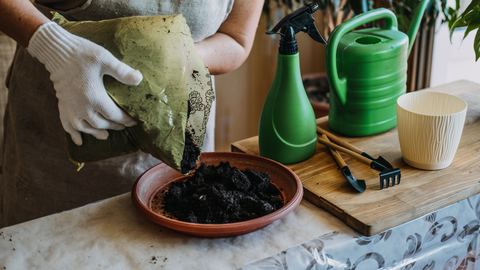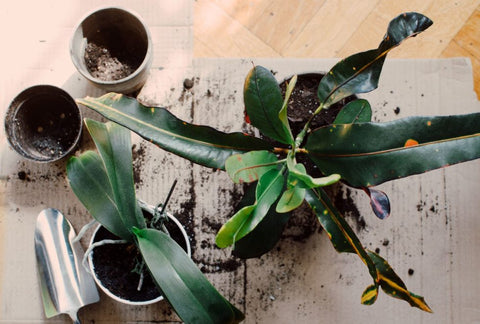An Interview With Founder Suzy Newsom about How to Pick a Pot and Potting Mix
So, you’ve bought your first (or maybe 50th!) houseplant, and now you're wondering how to give it the best chance at thriving. The big questions: What kind of soil should I use? Do I need to repot it? Should I add more soil over time? Sound familiar?
Choosing the right soil, knowing when to repot, and maintaining good soil care are essential parts of plant care, but they’re not always intuitive. That’s why we turned to the experts. We spoke with Suzy Newsom, the founder of Good Dirt, to answer all of our burning questions about pots, soil, and how to help plants thrive. Read on for some expert advice!

We hear the term “well-draining soil” a lot in plant care. What does that actually mean, and which plants require it?
Well-draining soil is one of the most important aspects of any potting mix. It means the soil has enough structure to provide porosity and aeration, allowing water and nutrients to flow through while giving roots space to breathe. Roots need oxygen as much as they need water and food! Many potting soils, especially those based on pine bark, break down quickly and become dense, trapping water and suffocating roots.
At Good Dirt, we use our proprietary BogBits®, a recycled byproduct of sustainably harvested peat moss that ensures permanent airflow in the soil. Because of BogBits®, gardeners can reuse our potting mix season after season. All plants—indoors and outdoors—benefit from well-draining soil, which is key to healthy root growth and overall plant health.
How big should the pot be in relation to the plant?
Ideally, the pot should be 2-4 inches larger than the grower pot your plant came in. If you're propagating, make sure the pot is big enough to accommodate the crown of the plant but not too large, as excess water in oversized pots can lead to root rot.

For more information on selecting the perfect pot for your edible plants, check out our blog on How to Select the Right Pot for Herbs and Vegetables.
For potting mix, does one type fit all, or do we need different soils for different plants?
With Good Dirt® mixes, one size fits all. There are many different soils on the market, each trying to balance porosity, water retention, and nutrition. Our potting mix achieves this balance through the use of BogBits® for porosity, sustainable blonde peat moss for moisture retention, and plant-based nutrients for growth. Our mix also includes PlantBiotics®, beneficial microorganisms that help with nutrient uptake, making it a living soil straight from the bag.
Is fertilizer necessary? How important is it?
Yes, fertilizer— or as we prefer to call it, Plant Food—is absolutely essential. Over time, watering leaches nutrients out of the soil, and they need to be replenished. Roots need food to grow and thrive, just like any other living organism. Avoid salt-based fertilizers, which can build up in the soil and burn roots and leaves. Opt for natural options instead.

What should we look for in a pot beyond aesthetics?
Drainage holes! This cannot be emphasized enough. The number one reason plants die is due to overwatering, and even the best soil won’t help if the pot can’t drain excess water. Never rely on rocks or pebbles at the bottom of a pot—they don’t actually improve drainage and can make things worse by creating a barrier that holds water around the roots. If your pot has a saucer, always empty it after watering to avoid root rot.

Is it bad to keep a plant in the plastic pot you bought it in? How important is it to repot a plant?
It’s okay to keep the plant in its plastic grower pot, but we recommend repotting it (whether in the same pot or a new one) within two weeks of bringing it home. The soil used in nurseries is designed for short-term plant care and controlled conditions. Once a plant is moved into a home environment, it needs fresh, nutrient-rich, well-draining soil to thrive. You can even place the plastic pot inside a decorative pot if you'd like—it’s lighter and easier to manage, especially when watering.








